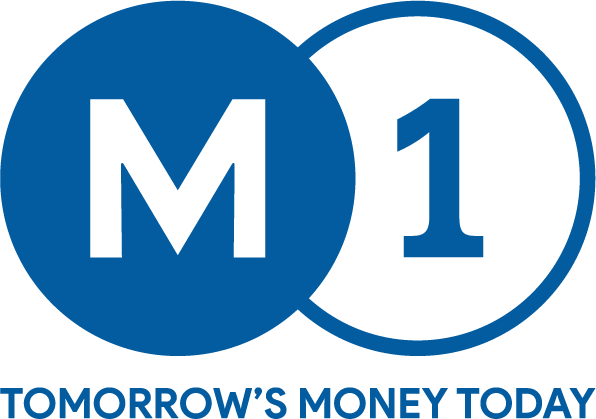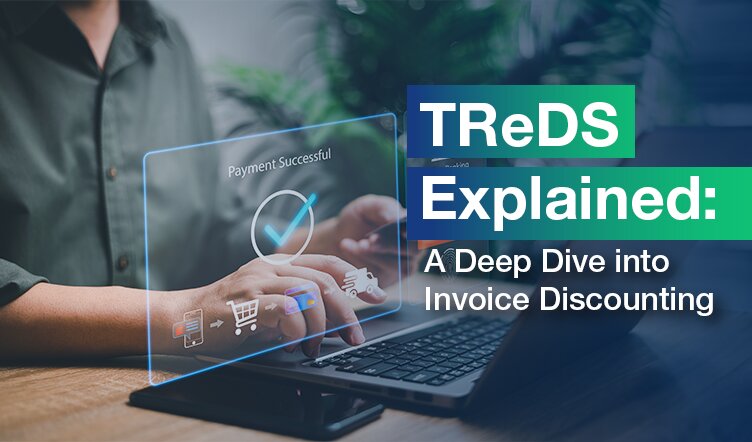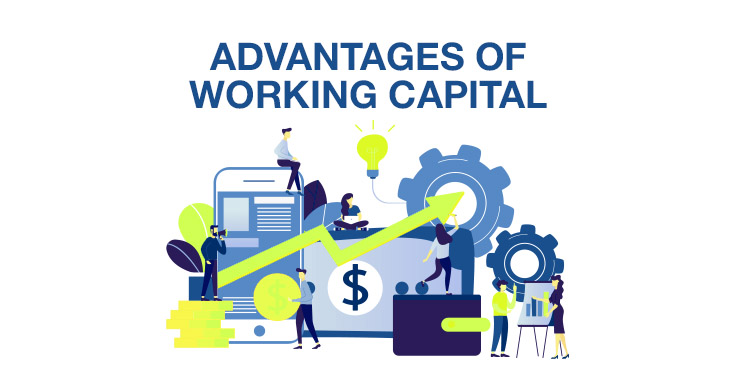Introduction: Cashflow Management Of MSMEs
The process of measuring, monitoring, and optimising the number of net cash receipts minus the costs paid by your business is cash flow management. In order to determine a companies financial health, it is an important factor, more important for all tiny companies. This is because the chances of small companies facing cash flow issues are more in case their expenditure exceeds their income. For small firms and MSMEs, it is hence, imperative to prevent any substantial cash flow constraints brought on by excessive expenditure due to which they turn to alternative financing techniques like invoice financing.
Cash Flow Analysis Techniques
The first thing to learn is that the cash flow of your business is not related to your profit statement. There are certain things that influence variations in a company’s cash flow. However, it is important to ponder that they are all tied very closely to the operating capital of your business.
- Breakeven Evaluation: Even though profitability and cash flow of a business are not related, it’s still critical to determine the break-even point for your business. The initial objective of eerie business is to reach the breakeven point. This makes it easier for your business to effectively control your cash flow once you’ve made your first profit.
- The Quarterly Assessment: This technique entails reviewing your accounting ledger each quarter. In the world of business, cash is always the king. In order to keep a tab, you should always analyze your spending patterns and examine your inventory regularly. The largest wastage of cash is keeping those products on hand that are no longer needed. This can be dealt with by making a list of unnecessary or any form of extravagant spending.
- Accelerate The Recovery Process: Always take extra care to guarantee that you receive the money that is owed to you. Know the procedure for recovering unpaid debts as unpaid invoices have hurt several companies in the past, causing them to run out of funds eventually. Therefore, in order to have a healthy cash flow, make sure your customers are paying their invoices timely.
Just a handful of the actions can go a long way to increase your cash flow, as listed above. A smooth cash flow ensures timely payments to all employees and other expenses. Watch your cash flow and see how your company develops!
How Can Invoice Financing Help with Cash Flow?
Experiencing a cash flow crunch is a part of running businesses, especially if they are new or tiny. Until a few years back, you would have approached the bank manager for assistance with an overdraft facility. However, the increasing withdrawal of SME overdrafts with banks in recent, so now alternative is less likely to be accessible. Invoice financing can be might be useful.
Businesses can choose between a short-term loan with high interest rates or invoice financing, which allows them to borrow funds against outstanding invoices. The “”one size fits all”” was how invoice financing was previously but in recent years, it has undergone significant change. Now, it comes in various varieties like factoring, invoice discounting, and selective invoice finance, sometimes known as “spot” factoring.
The best suitable option for a business always depends on the specifics of each situation, but businesses in high-growth environments consistently require working capital. They find that the best option is a full invoice discounting facility involving signing a contract for at least a year to finance a portion of the entire debtor book. Pledging all company assets as collateral to the financier ensures security. Who then wants personal guarantees from the directors.
However, because of the transient nature of such cash flow issues, there is rarely a need to enter into a long-term agreement which can possibly be costlier in order to address a momentary difficulty. Selective invoice financing, in which the borrower can decide which particular invoices to finance is the most affordable option.
Role Of Invoice Financing in Boosting MSME Cash
Invoice financing helps businesses get advances against their unpaid invoices. The lending party charges companies a fee for the advance payment, which requires them to pay a portion of the total amount. This is a great option for financing, especially for MSMEs to meet their immediate cash requirements.
Businesses use these invoice-related advances as loans in this process. Instead of waiting till the payment of invoices, this strategy enables enterprises/corporations to acquire the money they require immediately. According to a customer research survey, invoice finance makes funds easily accessible and are highly practical and even help firms develop and earn more.
HOW CAN INVOICE FINANCING IMPROVE BUSINESSES’ CASH FLOWS?
- It provides quick and convenient access to cash.
- It helps free up capital that would otherwise be constrained by capital.
- There are very simple conditions of repayment for invoice financing.
- Finance for invoices prevents debt growth.
AN MSME’S INVOICE FINANCING PROCESS: HOW DOES IT WORK?
Invoice financing allows businesses to receive money in advance for unpaid bills that are scheduled to be paid at a later date. Invoice factoring operates similarly to cash advances that offer funds at nominal costs when required. Without having to sell the unpaid bills, it establishes a credit line against the unpaid invoices.
As a result, it helps in the management of your bills, doing away with the need for borrowing against them. The owners of small companies and MSMEs have a significant edge in running their companies as they help with better management of their resources when they have control over cash flows. Without any limitations, they are free to invest, develop, launch new market efforts, and do much more. Some of those are:
- Quick access to cash
- Helps in releasing tied-up capital
- Provides simple terms of repayment
- Zero debt accumulation
Is Invoice Financing Right for My Business?
If you don’t pay attention, invoice financing can even kill your business and thus, understanding your company’s position is essential. Do you frequently miss out on cash flow? Are you in business with other businesses? Experts advise against using invoice financing in business-to-consumer interactions due to the immediate availability of funds and the infrequency of invoices in these cases.
Receiving bills alone is insufficient because if your consumers don’t make payments on time or on a regular basis, chances are that you will find yourself in trouble with a high APR rate. While paying 1% interest per month is typical, the amount rises rapidly over the course of the loan.
How Invoice Financing Allows You to Get Early Payment for the Unpaid Invoices to Raise Ready Cash
Customers agree to pay you within the agreed-upon time frame when you deliver a good or service to them. As a result, you now have an accounts receivable line in your books but no associated revenue. An invoice finance firm can help with that. The only way to obtain invoice discounting, which is distinct from a term loan, is to pay a small processing charge on the invoices you wish to be paid early for as a supplier. You may extend the payment terms for customers up to 90 days, and you can use the money for business expansion.
Cash Flow Advantages of Invoice Financing
There’s a different form of finance called reverse factoring that helps businesses increase their cash flow by supporting prompt bill payments. In accordance with their payment conditions, your clients typically pay the factoring business within 30-60 days of the invoice due date. Today, various different sectors, such as transportation, hotels, IT, energy, business services, etc., are using invoice factoring.
Invoice Factoring Advantages In Comparison To Bank Loans:
- Fast approvals: Applying for factoring is quicker and much simpler when compared to applying for a typical company loan. Chances are that you may get funded and authorised in less than a week.
- Based on your buyer’s creditworthiness, approval will be granted: A factoring firm takes into account, the credit risk of your client’s account rather than your credit. Businesses of all sizes and levels of expertise are eligible to apply for factoring.
- Money that can expand with your company: With the expansion of your business your factoring line can expand as well. A factoring company, unlike banks, doesn’t set funding limits, which depends upon the credit history of your company.
- No money owed: With invoice factoring, you don’t accrue debt like you would with loans. No matter how many invoices are factored in, the fee is subtracted from each transactions in order to avoid building up debt.
How Does The TReDS Platform Help You With This?
The Reserve Bank of India gave Mynd Solutions permission to establish and run M1xchange, the country’s first trade receivable exchange. M1xchange has revolutionized the process of obtaining working capital for MSMEs by digitally transforming invoice discounting from multiple financiers. With TReDS, MSMEs in India may effectively address their enduring cash flow problems and advance to the next stage of the Indian economy.
With M1xchange TReDS, the following becomes a piece of cake
- MSMEs have more access to financing at affordable rates without having to put up more collateral. Additionally, MSMEs have no recourse in relation to the loan. Corporations reduce their spending on procurement by better negotiating the terms of their vendors’ financing.
- Trade Receivable Exchange platform like M1xchange, financiers have the chance to develop PSL asset portfolios.
















